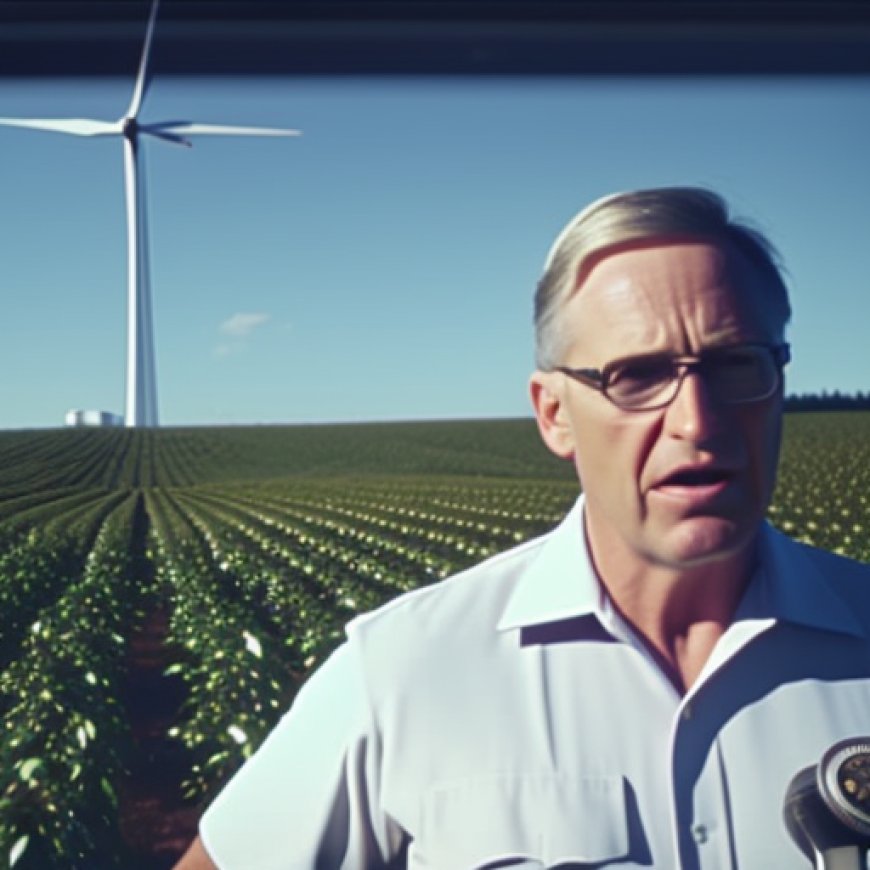Clean energy in rural America gets another big boost of federal…
Clean energy in rural America gets another big boost of federal… Canary Media


The Department of Energy Announces Grants to Boost Clean Energy in Underserved Areas
The Department of Energy has announced grants ranging from $500,000 to $5 million per project to support energy resilience and reliability in underserved areas. These grants aim to increase clean energy knowledge and capacity while also reducing the energy burden on rural and disadvantaged families. Low-income households typically have three times the energy burden of other households, which can lead to difficult decisions between paying for fuel or electricity and other necessities such as meals and medicine.

Highlighted Projects
The grants will fund a variety of projects across the country. Here are a few examples:
-
The Adams Electric Cooperative–led project in Schuyler County, Illinois, will install a 1-megawatt wind turbine and a 1-megawatt solar array to provide clean electricity for about 7,500 families in an area affected by the closure of coal mines.
-
The Monongahela Power Company–led project will rebuild 23 miles of distribution power lines to improve grid reliability for more than 3,000 disadvantaged customers in West Virginia.
-
A project co-led by Dallas County and the Alabama Board of Education will enable up to nine schools in the county serving thousands of K–12 students to undergo energy efficient retrofits. Three of those schools will install rooftop solar, creating a healthier learning environment while also reducing energy costs and carbon pollution.
The Choctaw Nation of Oklahoma was selected to install 2.1 megawatt-hours of battery storage to serve a microgrid on their Poteau campus. This area is prone to power outages due to severe weather conditions, and the microgrid will provide backup power to a health clinic, child development center, and food distribution center.
“We are tremendously excited with the opportunity to provide consistent power for our tribal members in the Poteau area, especially with services such as healthcare,” said Choctaw Nation Chief Gary Batton. The project will also include heat pumps and other energy efficiency upgrades expected to save $140,000 annually.
Next Steps
The selected applicants will now begin negotiating awards with the DOE. This process will clarify any changes in anticipated costs since the submission of the plans. The DOE aims to finalize the awards by the end of the year.
With approximately half of the program’s $1 billion budget remaining, the DOE plans to announce at least one more funding opportunity in 2024 to further develop clean energy in rural America.
SDGs, Targets, and Indicators
1. Which SDGs are addressed or connected to the issues highlighted in the article?
- SDG 7: Affordable and Clean Energy
- SDG 10: Reduced Inequalities
- SDG 11: Sustainable Cities and Communities
- SDG 13: Climate Action
2. What specific targets under those SDGs can be identified based on the article’s content?
- SDG 7.1: By 2030, ensure universal access to affordable, reliable, and modern energy services.
- SDG 10.2: By 2030, empower and promote the social, economic, and political inclusion of all, irrespective of age, sex, disability, race, ethnicity, origin, religion, or economic or other status.
- SDG 11.1: By 2030, ensure access for all to adequate, safe, and affordable housing and basic services and upgrade slums.
- SDG 13.2: Integrate climate change measures into national policies, strategies, and planning.
3. Are there any indicators mentioned or implied in the article that can be used to measure progress towards the identified targets?
- Indicator for SDG 7.1: Percentage of population with access to electricity.
- Indicator for SDG 10.2: Proportion of people living below the national poverty line.
- Indicator for SDG 11.1: Percentage of urban population living in slums.
- Indicator for SDG 13.2: Number of countries with climate change strategies and plans.
Table: SDGs, Targets, and Indicators
| SDGs | Targets | Indicators |
|---|---|---|
| SDG 7: Affordable and Clean Energy | 7.1: By 2030, ensure universal access to affordable, reliable, and modern energy services. | Percentage of population with access to electricity. |
| SDG 10: Reduced Inequalities | 10.2: By 2030, empower and promote the social, economic, and political inclusion of all, irrespective of age, sex, disability, race, ethnicity, origin, religion, or economic or other status. | Proportion of people living below the national poverty line. |
| SDG 11: Sustainable Cities and Communities | 11.1: By 2030, ensure access for all to adequate, safe, and affordable housing and basic services and upgrade slums. | Percentage of urban population living in slums. |
| SDG 13: Climate Action | 13.2: Integrate climate change measures into national policies, strategies, and planning. | Number of countries with climate change strategies and plans. |
Note: The specific indicators mentioned in the article are implied based on the targets and may not be explicitly stated.
Copyright: Dive into this article, curated with care by SDG Investors Inc. Our advanced AI technology searches through vast amounts of data to spotlight how we are all moving forward with the Sustainable Development Goals. While we own the rights to this content, we invite you to share it to help spread knowledge and spark action on the SDGs.
Fuente: canarymedia.com

Join us, as fellow seekers of change, on a transformative journey at https://sdgtalks.ai/welcome, where you can become a member and actively contribute to shaping a brighter future.







